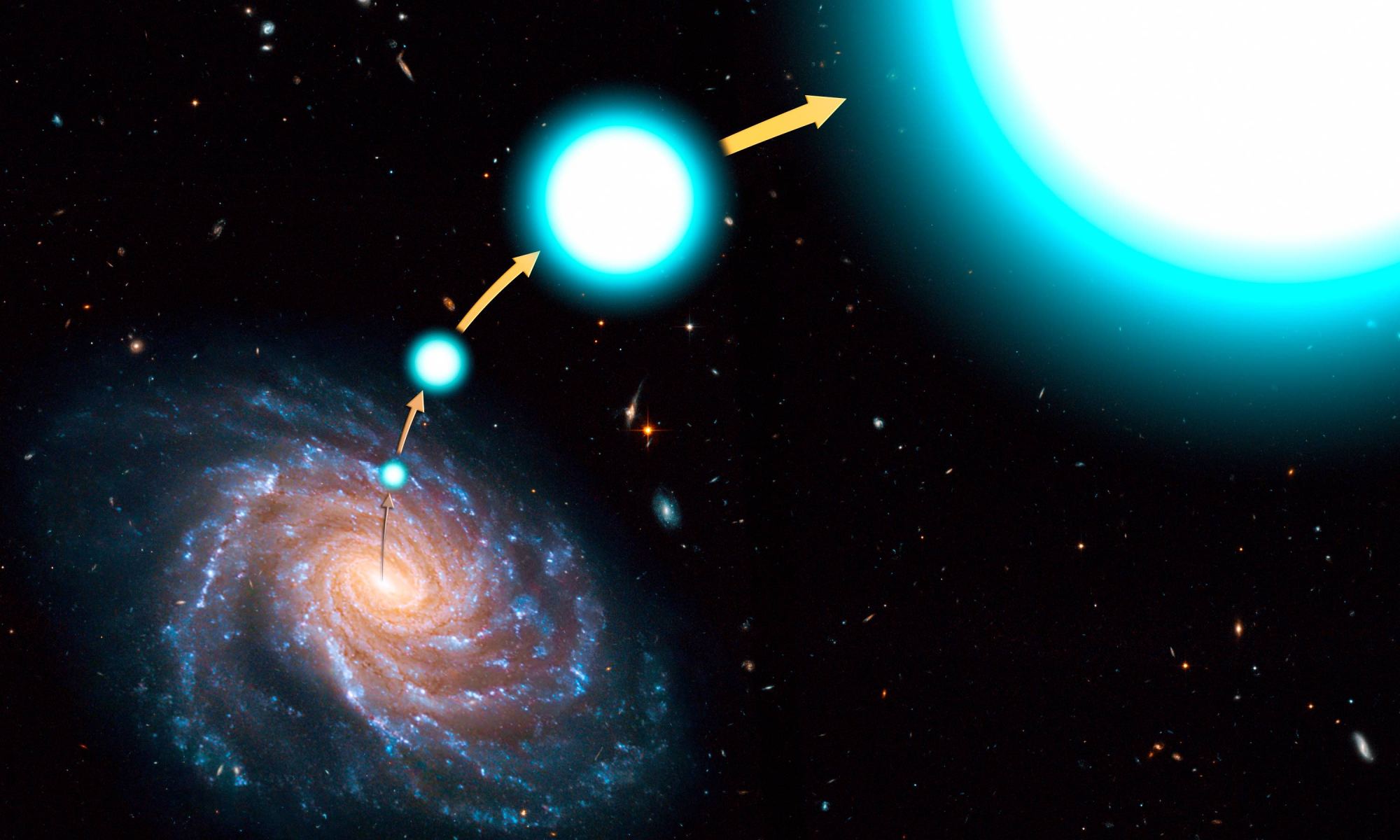If dark matter is out there, and it certainly seems to be, then what could it possibly be? That is perhaps the biggest mystery of dark matter. The only known particles that match the requirement of having mass and not interacting strongly with light are neutrinos. But neutrinos have low mass and zip through the cosmos at nearly the speed of light. They are a form of “hot” dark matter, so they don’t match the observed data that require dark matter to be “cold.” With neutrinos ruled out, cosmologists look toward various hypothetical particles we haven’t discovered, and perhaps the most popular of these are known as axions.
Continue reading “If Axions are Dark Matter, we've got new Hints About Where to Look for Them”Stars Getting Kicked out of the Milky Way can Help us map its Dark Matter Halo

Dark matter is notoriously difficult to study. It’s essentially invisible to astronomers since it can’t be seen directly. So astronomers rely on effects such as the gravitational lensing of light to map its presence in the universe. That method works well for other galaxies, but not so well for our own. To map dark matter in the Milky Way, we rely mostly on the motions of stars in our galaxy. Since dark matter attracts regular matter gravitationally, the method works well for areas of the galaxy where there are stars. Unfortunately, most of the stars lie along the galactic plane, making it difficult to map dark matter above and below that plane. But a recent study proposes a way to map more of our galaxy’s dark matter using runaway stars.
Continue reading “Stars Getting Kicked out of the Milky Way can Help us map its Dark Matter Halo”Slime Mold Grows the Same as the Large Scale Structure of the Universe

Matter in the Universe is not distributed equally. It’s dominated by super-clusters and the filaments of matter that string them together, surrounded by huge voids. Galaxy super-clusters are at the top of the hierarchy. Inside those is everything else: galaxy groups and clusters, individual galaxies, and solar systems. This hierarchical structure is called the “Cosmic Web.”
But how and why did the Universe take this form?
Continue reading “Slime Mold Grows the Same as the Large Scale Structure of the Universe”
